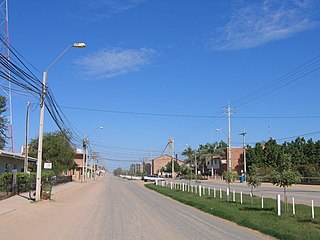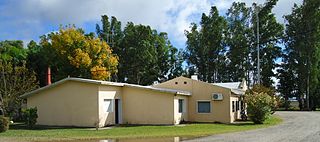
Mennonites are a group of Anabaptist Christian church communities tracing their roots to the Radical Reformation. The name is derived from that of one of the early prominent leaders of the Anabaptist movement, Menno Simons (1496–1561). Through his writings about Reformed Christianity during the Radical Reformation, Simons articulated and formalized the teachings of earlier Swiss Anabaptist founders as well as early teachings of the Mennonites founded on the belief in both the mission and ministry of Jesus. These beliefs the original Anabaptist followers had held with great conviction, despite persecution by various Roman Catholic and Mainline Protestant states. Formal Mennonite beliefs were codified in the Dordrecht Confession of Faith (1632), which affirmed "the baptism of believers only, the washing of the feet as a symbol of servanthood, church discipline, the shunning of the excommunicated, the non-swearing of oaths, marriage within the same church", strict pacifistic physical nonresistance, anti-Catholicism and in general, more emphasis on "true Christianity" involving "being Christian and obeying Christ" as they interpret it from the Holy Bible.

The Russian Mennonites are a group of Mennonites who are the descendants of Dutch and North German Anabaptists who settled in the Vistula delta in West Prussia for about 250 years and established colonies in the Russian Empire beginning in 1789. Since the late 19th century, many of them have emigrated to countries which are located throughout the Western Hemisphere. The rest of them were forcibly relocated, so very few of their descendants currently live in the locations of the original colonies. Russian Mennonites are traditionally multilingual but Plautdietsch is their first language as well as their lingua franca. In 2014, there were several hundred thousand Russian Mennonites: about 200,000 live in Germany, 74,122 live in Mexico, 150,000 in Bolivia, 40,000 live in Paraguay, 10,000 live in Belize, tens of thousands of them live in Canada and the US, and a few thousand live in Argentina, Uruguay, and Brazil.

Filadelfia is the capital of Boquerón Department in the Gran Chaco of western Paraguay. It is the centre of the Fernheim Colony. It is about a 5-hour drive from the capital of Asunción. With a population of about 20,000, it is the largest town for 400 kilometres (250 mi).
The German minority in Paraguay came into existence with immigration during the industrial age. The "Nueva Germania" colony was founded in Paraguay in 1888; though regarded as a failure, it still exists despite being abandoned by many of its founders in the 1890s. Paraguay was a popular place for German leaders accused of war crimes to retreat after the second World War. There are large communities of German descendants living in the department of Guairá, in a town called, the department of Itapúa, mainly in the Departmental Capital, Encarnación and the German towns of Obligado, Bella Vista and Hohenau. Some recent Brazilian immigrants to Paraguay also have German ancestry (Brasiguayos). Notable Paraguayans of German descent include the former president of Paraguay Alfredo Stroessner.
Menno Colony is a Mennonite settlement located in the central part of the Chaco region, in northwest Paraguay, occupying an area of 7500 km² (2900 mi²). It was founded in 1926 by Plautdietsch-speaking descendants of Russian Mennonites who emigrated from Canadian provinces of Manitoba and Saskatchewan. Neighbouring Mennonite settlements are Fernheim Colony and Neuland Colony. The main settlement of the colony is Loma Plata. Menno is the largest of the Mennonite colonies in Paraguay.

The Fernheim Colony is a Plautdietsch-speaking settlement of Mennonites originally from Russia of about 5000 in the Chaco of Paraguay. Mennonites from the Soviet Union founded it between 1930 and 1932. Filadelfia is the administrative center of the colony, seat of Boquerón department and is considered the 'Capital of the Chaco'.
Neuland Colony is a Mennonite settlement in Paraguay. After thousands of Plautdietsch-speaking Russian Mennonites fled the Soviet Union during the Great Trek of World War II, many were left displaced by the war. In response to this need, land in Boquerón Department was purchased by the Mennonite Central Committee in 1947 and settled by these same Mennonite refugees from Europe. As of 2008 the colony had about 3,400 residents.

Mennonites in Belize form different religious bodies and come from different ethnic backgrounds. There are groups of Mennonites living in Belize who are quite traditional and conservative, while others have modernized to various degrees.

The Mennonites in Bolivia are among the most traditional and conservative of all Mennonite denominations in South America. They are mostly Russian Mennonites of Frisian, Flemish, and Prussian descent. As of 2013, there were about 70,000 Mennonites living in Bolivia, that population has grown to around 150,000 as of 2023.
Peter P. Klassen was a Russian Mennonite author who wrote in the German language. He fled with his parents from Soviet Russia to Paraguay, arriving there in 1931. He has had a distinguished career as the premier historian of Mennonites in South America. Klassen has also worked as a teacher and was a long-time editor of the Paraguayan Mennonite newspaper Mennoblatt.
The name Old Colony Mennonites is used to describe that part of the Russian Mennonite movement that is descended from colonists who migrated from the Chortitza Colony in modern Ukraine near Zaporizhia to settlements in Canada. Theologically, Old Colony Mennonites are largely Conservative Mennonites.

Mennonites in Uruguay have been present since 1948. The Mennonites of Uruguay are made up of ethnic Plautdietsch-speaking Russian Mennonites, who are descendants of Friesian, Flemish and Prussian people, as well as Spanish-speaking Uruguayans of all ethnic backgrounds, that converted responding to the missionary efforts of the immigrants.

Mennonites in Argentina belong to two quite different groups: conservative and very conservative Plautdietsch-speaking group of Russian Mennonites who are descendants of Frisian, Flemish and Prussian people, and converts to the Mennonite faith from the general Argentinian population. The Russian Mennonites are the third largest community of Mennonites in South America, with six colonies in Argentina. While Russian Mennonites have their own language and customs and live in colonies, converts to the Mennonite faith normally live in cities and speak Spanish and do not differ much from other Protestants in Argentina. Conservative ethnic Mennonites normally do not engage in missionary activities but look for a quiet and remote place where they can live according to their tradition. More liberal Mennonites are engaged in worldwide missionary work like other North American Protestant denominations. About one third of Mennonites in Argentina are conservative ethnic Mennonites who belong to the Altkolonier branch.
Upper Barton Creek is a mixed Mennonite settlement and expats in Cayo District in Belize in the area of the Barton Creek. The Mennonites in Upper Barton Creek are ethnic Mennonites of the Noah Hoover group.

Historically, the migratory history of Paraguay has been ambiguous, since it has had periods of large scale emigration as well as large waves of immigrants, primarily from Europe.
The term ethnic Mennonite refers to Mennonites of Central European ancestry and culture who are considered to be members of a Mennonite ethnic or ethnoreligious group. The term is also used for aspects of their culture, such as language, dress, and Mennonite food.
Mennonites in Peru belong to two quite different groups: converts to the Mennonite faith from different groups of the Peruvian population and very conservative Plautdietsch-speaking ethnic Mennonite Old Colony Mennonites of the so-called Russian Mennonites. Converts to the Mennonite faith are both people who speak Spanish and groups with an indigenous Amerindian background, notably Asháninka. These converts do not differ much from other Protestants in Peru.
Mennonites in Colombia were until 2016 almost only converts from the general and indigenous Colombian population to the Mennonite faith. Since then conservative Plautdietsch-speaking ethnic Mennonites, who belong to the so-called Russian Mennonites, started to immigrate to Colombia.
Nehrungisch is a subdialect of Low Prussian, belonging to the Low German language variety. It was spoken in East Prussia and West Prussia, in the region around the Vistula Spit near Danzig. The easternmost locality where this variety was spoken was Narmeln, and it was spoken from Narmeln to Krakau (Krakowiec).
Werdersch is a subdialect of Low Prussian, which itself is a subdialect of Low German. This dialect is spoken in Poland and was spoken in the former province of West Prussia. Werdersch is closely related to Nehrungisch and Plautdietsch.














